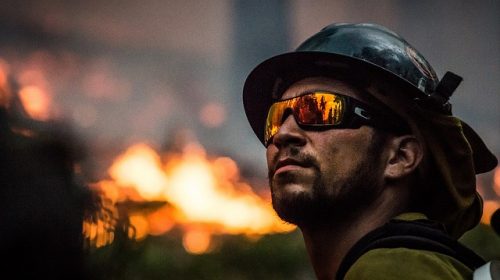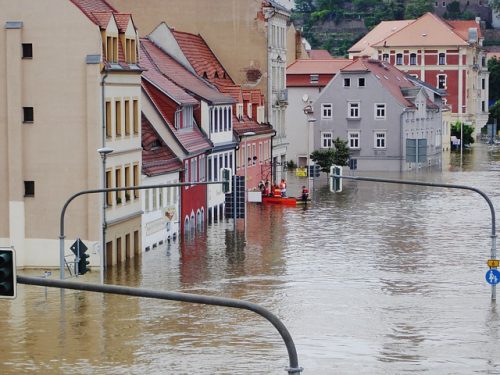Hours after a destructive tornado ripped through Alabama in March; President Donald Trump decided to use Twitter to assure that the state would get “A Plus treatment” from the federal government. As local officials start their recovery in town, the residents can start calling the hotline for Alabama disaster relief information.
However, the president strongly worded promise — and his determination to see the state on Friday, just days following the storms there killed 23 people — marked a sharp contrast with all the rhetoric he’s used recently to describe disasters in bluer regions of the nation, where he regularly criticizes local leaders and threatens to draw federal aid.
Since Trump addresses his most pointed analysis of disaster recovery in California, which suffered its deadliest wildfire season in history this past year, and Puerto Rico, which has been recognizing Hurricane Maria since 2017, critics have asked whether the president is showing favors with provinces and constituencies that support him.
During the Obama administration, a Federal Emergency Management Agency spokesman, Rafael Lemaitre said: “The rhetoric does matter.” “Hurricanes don’t care if you’re a Democrat or a Republican. Tornadoes don’t care if you live in a red or a blue state.”
Even Trump’s critics admit there isn’t any proof politics have influenced the procedure itself — driven principally by career FEMA officials –. And Trump formerly tweeted words of support to Puerto Rico and California like those he has done for Alabama.
“Our hearts are with you,” he wrote to Puerto Ricans hours before Maria made landfall on the island in 2017. “Will be there to help!”
But former FEMA officials that worked for presidents of both parties say Trump’s penchant for bombast and people bickering with local and state leaders sends the wrong message to victims of disasters and can distract from state and national cooperation.
Trump on California
Trump visited Alabama on Friday, days after approving Gov. Kay Ivey’s petition for a higher disaster notification for storm-battered Lee County. The tornado was one of 34 that hit Alabama, Florida, Georgia, and South Carolina over the weekend.
“FEMA has been told directly by me to give the A Plus treatment to the Great State of Alabama and the wonderful people who have been so devastated by the Tornadoes,” the president posted on Twitter March 4th, hours after the storms struck.
Trump’s rapid response in Alabama arrived as he had regularly slammed California with claims that local officials haven’t correctly preserved forests to prevent wildfires. In reality, almost 60 percent of California’s 33 million acres of forest is managed and owned by federal agencies, as per the University of California.
Combined, the Woolsey and Campfires killed nearly 90 Californians. Trump traveled to the state in November and toured distressed communities, including the city of Paradise, walking between the charred remains of houses as smoke hung in the air. He aimed a few of those very same officials in threatening tweet months afterward.
“Unless they get their act together, which is unlikely, I have ordered FEMA to send no more money,” Trump wrote in January. “It is a disgraceful situation in lives & money!”
California Gov. Gavin Newsom, a Democrat who showed gratitude for the President a day before that tweet was posted for his service for the state’s recovery efforts, reacted by arguing, “Disasters and recovery are no time for politics.”
There is no sign Trump served through with his threat and delayed service.
An ‘A-Plus’ grade?
Trump has said the “A Plus treatment” line earlier, reviving the grade former FEMA officials provided him for the answer to the hurricanes in 2017 that influenced Puerto Rico, Texas, Florida and the U.S. Virgin Islands. Michael Brown, the FEMA official under President George W. Bush, reported to CNN in late 2017 that Trump deserved an “A-plus.”
However, Brown also condemned Trump in that interview for arguing with local and state officials, adding that such disputes would be handled privately.
“No, it’s not helpful,” Brown said. “Please, Mr. President, pick up the phone, don’t tweet.”
Talk versus Actions
Trump made 118 Key disaster declarations throughout the first two years of his presidency, and even his critics admit there’s not any proof that politics has played a part in that procedure. Trump has addressed disaster declarations in blue and red states, such as a volcanic eruption in Hawaii, a snowstorm in New York, and flooding in Vermont.
Officials ask a disaster declaration via a regional FEMA office. Agency administrators in Washington and on the ground gauge the extent of the damage and make a recommendation to the president, which is nearly always followed. The procedure means career officials at FEMA have a significant part in determining where disasters are announced.
“Knowing the folks I know at FEMA, if anything, they bend over backward to make sure there’s no favoritism,” said Craig Fugate, a former Florida emergency officer who headed the national agency for the majority of President Barack Obama’s time in office. “I’ve not seen any correlation between the tweets and FEMA doing anything differently.”
However, Fugate said, Trump’s rhetoric is “not helpful.”
Neither the FEMA nor the White House responded to requests for comment, but White House officials have said Trump’s criticism of California and Puerto Rico is based on conditions on the earth before the disasters.
Spat with Puerto Rico
Trump’s struggles with some Puerto Rico executives, including San Juan Mayor Carmen Yulín Cruz, have sustained after the storm passed.
The president asserted last fall, without proof, that Puerto Rico intended to use federal disaster money to repay its debt. Since then the government has frequently planned to tap into disaster funds, including helping cover the president’s recommended wall along the U.S.-Mexico boundary, but has faced resistance in Congress.
In October, Trump wrote: “The U.S. will NOT bail out long outstanding & unpaid obligations with hurricane relief money!”
Trump contested a report placing the death toll from the Storm at almost 3,000, suggesting it was an attempt by Democrats to undermine him. Currently, the White House publicly denied an additional $600 million in post-hurricane food assistance to the island, calling it “unnecessary and excessive.”
FEMA officials say the delays in providing aid, restoring water service and receiving the island’s power grid were due to four factors:
- antiquated transport and
- electricity network,
- the island’s steep terrain, and
- political turf wars which prevented smooth coordination.
However, Erica González, acting manager of Power 4 Puerto Rico, a combination that supports for the island, stated the island deserved better from its administration.
“Whether in Alabama or elsewhere after a disaster, everyone deserves A-plus treatment,” she said. “Where was that A-plus urgency … when it came to helping the people of Puerto Rico?”
Residents of Calhoun, Cullman, and Etowah provinces can enroll with FEMA by:
- Applying online at www.DisasterAssistance.gov
- Calling the registration telephone number at 1-800-621-3362.
- People with a speech disability or hearing loss and use TTY should call 1-800-462-7585 directly; individuals that employ 711 or Video Relay Service, call 1-800-621-3362.



0 Comments